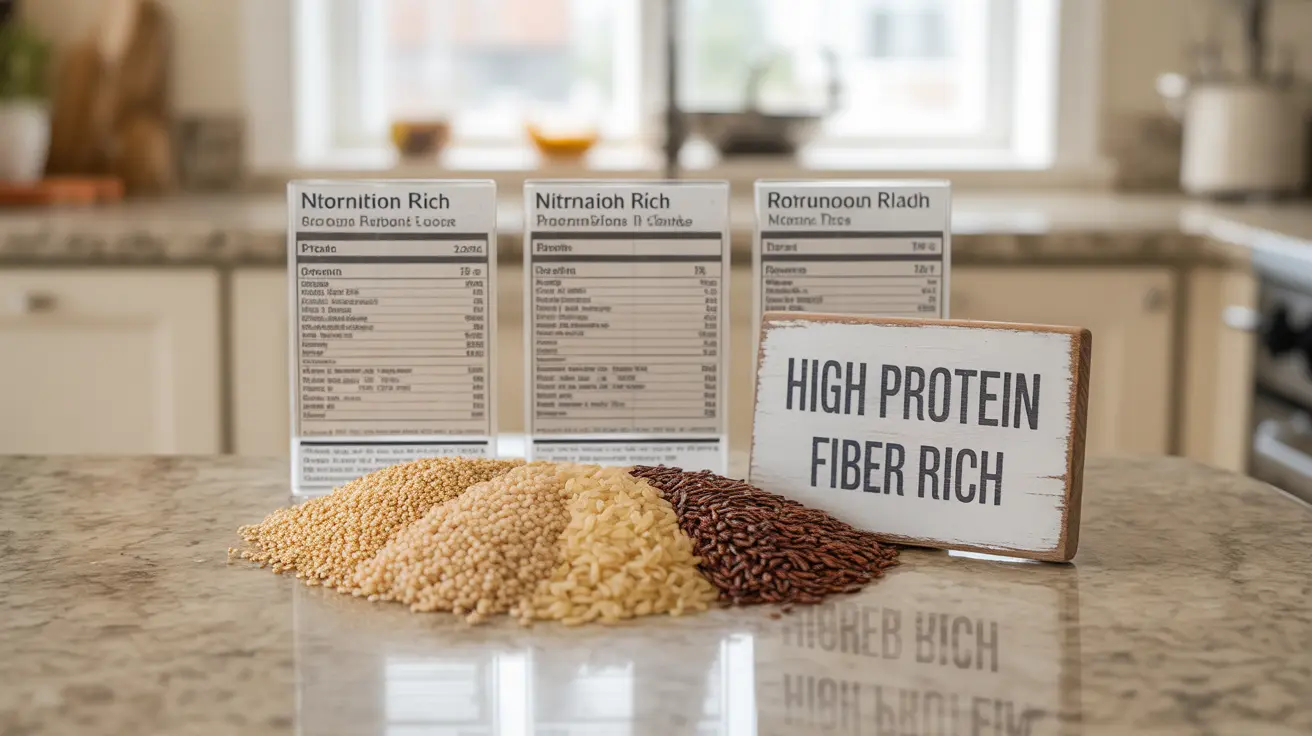When it comes to choosing healthy grains for your meals, the quinoa vs rice debate has become increasingly common among health-conscious consumers. Both grains serve as excellent staple foods that can form the foundation of nutritious meals, but they differ significantly in their nutritional profiles, health benefits, and dietary applications.
Understanding the key differences between quinoa and rice can help you make informed decisions about which grain best fits your dietary goals, whether you're managing weight, following a gluten-free lifestyle, or seeking to optimize your protein intake. This comprehensive comparison will explore the nutritional distinctions, health implications, and practical considerations of incorporating these grains into your diet.
Nutritional Profile Comparison
The most significant difference between quinoa and rice lies in their macronutrient composition. Quinoa contains approximately 8 grams of protein per cooked cup, compared to brown rice's 5 grams and white rice's 4 grams. This higher protein content makes quinoa particularly valuable for individuals following plant-based diets or those looking to increase their daily protein intake.
In terms of carbohydrates, both grains provide substantial energy, with quinoa containing about 39 grams per cup and brown rice offering approximately 45 grams. However, quinoa delivers more fiber, providing 5 grams per cup compared to brown rice's 4 grams and white rice's minimal 1 gram. This fiber difference significantly impacts digestive health and satiety levels.
Calorie-wise, quinoa and brown rice are relatively comparable, with quinoa containing roughly 220 calories per cooked cup and brown rice providing about 215 calories. White rice is slightly lower at approximately 200 calories per cup, though it offers fewer nutrients overall.
Complete Protein Benefits
Quinoa stands out as one of the few plant-based complete proteins, containing all nine essential amino acids that the human body cannot produce independently. This complete amino acid profile makes quinoa exceptionally valuable for vegetarians, vegans, and anyone seeking high-quality protein from non-animal sources.
Rice, while providing protein, lacks certain essential amino acids, particularly lysine in significant amounts. This makes rice an incomplete protein, though it can be combined with other foods like beans or legumes to create a complete amino acid profile. The complete protein advantage of quinoa eliminates the need for such strategic food combining.
For individuals following plant-based diets, this distinction is particularly important for muscle maintenance, tissue repair, and overall protein synthesis. The biological value of quinoa's protein rivals that of many animal proteins, making it an excellent substitute in vegetarian and vegan meal planning.
Fiber Content and Digestive Health
The fiber comparison between quinoa and rice varieties reveals significant differences that impact digestive health and blood sugar regulation. Quinoa's 5 grams of fiber per cup surpasses both brown rice and white rice, contributing to better digestive function and increased satiety.
Brown rice, while containing more fiber than its white counterpart, still falls short of quinoa's fiber content. This difference affects how quickly these grains are digested and absorbed, with higher-fiber options like quinoa promoting more stable blood sugar levels and prolonged feelings of fullness.
The soluble fiber in quinoa also supports healthy cholesterol levels and provides prebiotic benefits, nourishing beneficial gut bacteria. This combination of soluble and insoluble fiber makes quinoa particularly effective for maintaining digestive regularity and supporting overall gastrointestinal health.
Weight Management and Blood Sugar Control
When considering quinoa vs rice for weight management, several factors come into play. Quinoa's higher protein and fiber content contribute to increased satiety, potentially reducing overall calorie intake throughout the day. The combination of complete protein and fiber helps stabilize blood sugar levels, preventing the energy crashes that can lead to overeating.
The glycemic index differences between these grains also influence their impact on blood sugar. Quinoa has a lower glycemic index compared to white rice, resulting in a more gradual rise in blood glucose levels. This slower digestion can be particularly beneficial for individuals managing diabetes or prediabetes.
Brown rice, while having a lower glycemic index than white rice, still typically causes a more rapid blood sugar response than quinoa. The sustained energy release from quinoa can support better appetite control and may contribute to more successful long-term weight management strategies.
Gluten-Free Considerations
Both quinoa and rice are naturally gluten-free, making them safe options for individuals with celiac disease or non-celiac gluten sensitivity. This shared characteristic makes both grains valuable alternatives to wheat-based products for those following gluten-free diets.
However, cross-contamination during processing can be a concern for some quinoa products, particularly those processed in facilities that also handle wheat products. Individuals with severe gluten sensitivity should look for certified gluten-free quinoa products to ensure complete safety.
Rice is generally considered to have lower cross-contamination risks, as it's typically processed in dedicated facilities. Both grains serve as excellent foundations for gluten-free meal planning, providing essential carbohydrates without triggering gluten-related health issues.
Mineral and Vitamin Content
Quinoa excels in several key micronutrients, providing higher levels of magnesium, phosphorus, and iron compared to rice varieties. These minerals support bone health, energy metabolism, and oxygen transport throughout the body. Quinoa also contains notable amounts of folate, which is essential for DNA synthesis and red blood cell formation.
Brown rice offers its own nutritional advantages, including higher levels of selenium and manganese. These minerals support antioxidant function and metabolic processes. However, the overall micronutrient density of quinoa typically surpasses that of both brown and white rice.
The B-vitamin content varies between these grains, with brown rice providing more niacin and thiamine, while quinoa offers better folate levels. These vitamins are crucial for energy metabolism and nervous system function, making both grains valuable contributors to overall nutritional intake.
Frequently Asked Questions
What are the main nutritional differences between quinoa and rice?
The primary nutritional differences include quinoa's higher protein content (8g vs 4-5g per cup), complete amino acid profile, and greater fiber content (5g vs 1-4g per cup). Quinoa also provides more minerals like magnesium, phosphorus, and iron, while being comparable in calories and carbohydrates to rice varieties.
Is quinoa a complete protein and why does that matter for vegetarians?
Yes, quinoa is a complete protein containing all nine essential amino acids that the body cannot produce. This matters significantly for vegetarians because most plant proteins are incomplete, requiring strategic food combining to obtain all essential amino acids. Quinoa eliminates this need, providing high-quality protein comparable to animal sources.
Does quinoa have more fiber than brown rice and white rice?
Yes, quinoa contains approximately 5 grams of fiber per cooked cup, compared to brown rice's 4 grams and white rice's 1 gram. This higher fiber content contributes to better digestive health, increased satiety, and more stable blood sugar levels.
Can eating quinoa instead of rice help with weight loss and blood sugar control?
Quinoa may support weight loss and blood sugar control better than rice due to its higher protein and fiber content, which increase satiety and slow digestion. Its lower glycemic index compared to white rice results in more gradual blood sugar increases, potentially supporting better appetite control and metabolic health.
Are quinoa and rice both safe for people with celiac disease or gluten sensitivity?
Both quinoa and rice are naturally gluten-free and safe for people with celiac disease or gluten sensitivity. However, individuals with severe sensitivities should choose certified gluten-free quinoa products to avoid potential cross-contamination during processing, while rice generally has lower cross-contamination risks.




